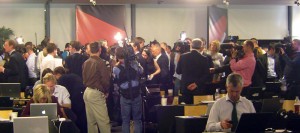We are now in the final stages of planning for the Showman’s Show 2010 and looking forward with meeting new and existing customers around the marquees and stands. This year our indoor stand (in the warm, number 68 ) is right on the main row whilst our outdoor stand (171) is at the end of avenue G. Whatever the weather it would be great to see you there.
If you haven’t had the chance to make your way over to the Newbury show ground before, The Showman’s Show is the trade show of choice for the events industry. An eclectic mix of everything from portable toilets, stages, marquees, lighting companies and of course event technology suppliers (us!)
A little taster of some of the things we will be exhibiting:
Reliable Connectivity – We’ll continue to talk about our passion delivering temporary connectivity – wired and wireless for any size and shape of event, from media centres to entire festivals.
An Overview of Connectivity Options – From a phone line and broadband to high capacity fixed line and satellite services. We have a range of options to meet all needs.
Mobile Phone Data Offload – Fed up with smartphone apps not working at events? Find out what we have been doing to resolve this problem.
RFID Solutions – After successful trials in 2010 we will be demonstrating our Smartcard system for crew catering (no more paper vouchers!) and other authorisation aspects.
That’s just a few of the things we will be talking about, along with some old favourites like the Communications Tower Light, CCTV, VoIP, network management & monitoring, flight-case based network hubs and more. Drop in for a chat, a coffee or a bottle of the finest Etherlive water.
The Showman’s Show, Newbury Showground is open 20th and 21st October 9:30am – 4pm.







